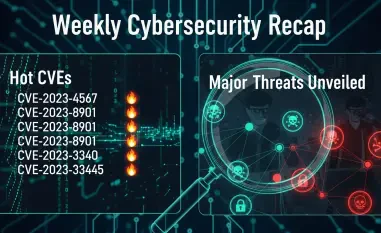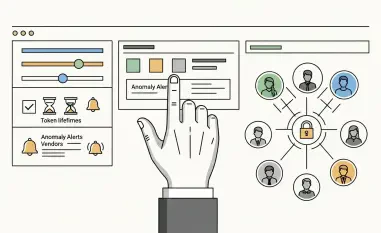The CRON#TRAP campaign exemplifies a sophisticated cyber-attack strategy targeting Windows machines by leveraging weaponized Linux virtual machines (VMs) in a manner that challenges traditional antivirus solutions. At the heart of this attack is an initial phishing email containing a malicious ‘.lnk’ file, cleverly disguised as a OneAmerica Survey. When the victim opens the file, it triggers the deployment of a concealed 285MB package that employs the legitimate virtualization tool, Quick Emulator (QEMU), renamed as ‘fontdiag.exe’ to bypass security detection mechanisms. This novel tactic underscores the relentless innovation in cyber-attack methodologies designed to infiltrate systems while evading detection.
Sophisticated Infrastructure and Stealth Tactics
A defining feature of the CRON#TRAP campaign is the creation of a hidden Linux environment known as “PivotBox,” which operates within the Tiny Core Linux distribution. PivotBox is meticulously pre-configured with a backdoor that automatically establishes a connection to a command-and-control (C2) server, effectively providing the attackers with real-time control over the compromised system. Within this isolated environment, several essential tools, including vim, openssh, and 7zip, are employed to maintain persistence through modified boot scripts and configuration backups. This arrangement facilitates the attackers’ continuous access to the host system while remaining undetected by conventional security solutions.
The primary targets of the CRON#TRAP campaign are organizations located in North America and Europe, reflecting the strategic value placed on these regions by cyber attackers. The attackers’ use of QEMU within a hidden virtual environment poses significant challenges for traditional antivirus solutions, which are often ill-equipped to detect and mitigate threats operating within isolated VMs. The sophisticated infrastructure supporting this campaign encompasses network testing capabilities, payload manipulation via a component named ‘crondx,’ and data exfiltration channels that leverage free file-sharing services. This multi-faceted approach underscores the attackers’ commitment to long-term infiltration and data theft.
Critical Role of the ‘crondx’ Component
At the core of the CRON#TRAP campaign’s sophistication lies the ‘crondx’ component, a 64-bit ELF executable that functions as a critical backdoor mechanism within the QEMU instance. This component is designed to utilize websocket protocols for covert communication with a C2 server, significantly enhancing its stealth capabilities. By employing websocket protocols, the attackers can establish encrypted communication channels that are difficult for traditional security tools to detect and analyze. This level of sophistication underscores the attackers’ emphasis on maintaining persistent, undetected access to compromised systems.
The attack sequence commences with a ZIP file attached to the phishing email, which, when executed, launches a PowerShell script responsible for initiating the Linux environment via QEMU. One notable aspect of the campaign is the adaptation of the open-source Chisel tunneling tool, originally designed to support TCP/UDP tunneling over HTTP with SSH security. By hardcoding connection parameters directly into the Chisel binary, the attackers have enhanced the stealth of their operations, ensuring sustained remote access through encrypted channels. This customization enables the attackers to deploy additional payloads, execute commands, and exfiltrate data while avoiding detection by conventional security measures.
Maintaining Persistence and Evading Detection
Persistence within the compromised system is bolstered through the modification of startup scripts and the secure implementation of SSH keys. Custom command aliases are employed to facilitate direct interaction within the isolated QEMU environment, as documented in the ‘.ash_history’ file. This file provides a detailed record of the threat actor’s activities, including tool installations, system reconnaissance, and payload deployments. This meticulous documentation aids in understanding the full scope of the attackers’ methodologies and the extent of system compromise.
The modular approach of the CRON#TRAP campaign highlights the attackers’ strategic use of legitimate software tools such as QEMU and Chisel to maintain persistent access while evading detection. This approach reveals a calculated effort to utilize commonly accepted tools in unconventional ways, thereby circumventing standard security defenses. This methodology underscores the necessity for organizations to adopt robust security practices that extend beyond traditional antivirus solutions. Recommendations for mitigating such threats include avoiding unsolicited downloads, treating external links with suspicion, closely monitoring common malware directories, scrutinizing legitimate software for unusual activities, and enabling comprehensive endpoint logging to enhance detection capabilities.
The overall execution of the CRON#TRAP campaign highlights an advanced cyber-attack strategy targeting Windows computers using weaponized Linux virtual machines (VMs) in a way that confounds traditional antivirus measures. This clever and innovative method shows the ongoing evolution of cyber-attack techniques aimed at penetrating systems while staying under the radar. The CRON#TRAP campaign serves as a sobering reminder of the need for enhanced cybersecurity measures and awareness, given the ever-evolving nature of cyber threats.













